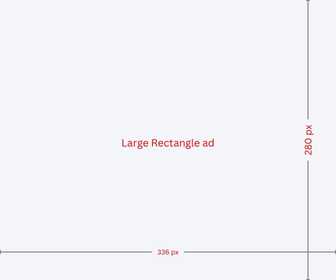Employee goal setting is a key responsibility for any manager. By setting measurable and attainable goals, a supervisor not only helps guide improvement in employee performance but can also actively help strengthen the business and enhance its reputation as an employer of choice.
Don’t let your competitors gain the edge when it comes to employee goal setting: according to the Paychex 2025 Business Leader Priorities survey, 90% of leaders are concentrating on employee engagement, retention, and professional development in the coming year. They know that a motivated workforce is a crucial indicator of long-term success.
What Is Goal Setting for Employees?
Goal setting uses short-term action items to motivate and inspire an individual to achieve a long-term vision. In a work setting, this can be a combination of setting specific, measurable, and actionable steps that help an employee and the organization move towards a desired result. For an employee, this result typically represents professional and personal growth.
Employee goal setting is usually a collaborative effort between workers and their direct manager or supervisor. Progress should be measured against benchmarks, and a manager can offer guidance to help workers identify the skills and professional development needed to advance toward a goal. Managers can also help employees find and establish goals that work within their roles and available resources. Goal setting for employees may also account for that worker’s personal targets and future ambitions within the organization.
Employee Goal Setting Examples
Employee goal-setting examples vary depending on the individual, organizational needs, role, and professional aspirations. Here are some types of employee goals:
- Personal Growth Goals. These types of goals may or may not be work-specific, though it can be argued that as an employee develops personally, they are more likely to feel satisfied and bring an elevated skill set to their role. For instance, an employee may want to improve their creative thinking abilities and identify several ways in which they can accomplish this, such as reading books, taking on a creative assignment within the organization, or enrolling in a class.
- Professional Development Goals. These can be skills or goals set to help an employee develop in their specific role or for a future role. Perhaps the employee needs to sharpen their leadership skills, improve their time management, or attain a professional certification.
- Team-Focused Goals. There may be times when a department or team within the organization must expand its collective skill set to improve performance or deliverables. For example, consider an HR team that engages in diversity, equity, and inclusion training (DEI) so they can better understand how to incorporate that into the organization.
How To Define Goals for Employees
Understanding how to define goals for employees can be the difference between improving productivity or the disappointment of stagnation. Goals must advance all the involved parties — individual, team, and business. Keep the following pointers in mind when determining employee goals:
- Take a comprehensive approach. As an employee, an individual’s goals should be in alignment with their personal development, that of their team, and the organization’s priorities.
- Collaborate. Goals can be powerful motivators, and as such, employees must take ownership of developing them. Supervisors and managers should provide guidance while balancing a certain level of transparency with the team to ensure support and a positive environment.
- Keep goals realistic. Few things are more discouraging to an employee than being excited about moving towards specific goals and not being given the resources to attain them. Set employees up for success by establishing goals that work within the employee’s role and the organization’s budget and objectives. Establish measurable steps so progress can be documented and assessed.
- Personal development. Helping employees reach their goals shows them that the business cares and supports their personal and professional growth. For a business, investing in an employee’s individual growth can also foster a sense of loyalty and increase engagement while reaping the rewards of a more highly skilled workforce.
Why Is Employee Goal Setting Important?
Setting goals at work can offer other benefits, such as helping to:
1. Ensure Staff Alignment
When more staff members work to further the company’s broader short-term and future goals, the coordinated effort is likely to move the business forward, which can be advantageous to everyone in the form of job satisfaction, a healthier bottom line, and a clearly defined sense of purpose.
2. Establish Clear Guidelines
Well-defined goals for employees that are attainable and measurable give supervisors and employees a set of guidelines and criteria that can be used in employee reviews and evaluations.
3. Deepen Employee Engagement
If done right, goal setting for employees can inspire and motivate them while helping them thrive in their roles. As a business invests in its employees’ growth and development, it can help them feel valued, thus deepening engagement even more.
4. Grow Top Talent
Helping current employees establish and reach their goals is another way an organization can expand the skill sets of its workforce and promote the development of top talent and high-performance teams within its current ranks.
7 Tips on How To Set Employee Goals
Employee Goal Setting Examples
Employee goal-setting examples vary depending on the individual, organizational needs, role, and professional aspirations. Here are some types of employee goals:
- Personal Growth Goals. These types of goals may or may not be work-specific, though it can be argued that as an employee develops personally, they are more likely to feel satisfied and bring an elevated skill set to their role. For instance, an employee may want to improve their creative thinking abilities and identify several ways in which they can accomplish this, such as reading books, taking on a creative assignment within the organization, or enrolling in a class.
- Professional Development Goals. These can be skills or goals set to help an employee develop in their specific role or for a future role. Perhaps the employee needs to sharpen their leadership skills, improve their time management, or attain a professional certification.
- Team-Focused Goals. There may be times when a department or team within the organization must expand its collective skill set to improve performance or deliverables. For example, consider an HR team that engages in diversity, equity, and inclusion training (DEI) so they can better understand how to incorporate that into the organization.
How To Define Goals for Employees
Understanding how to define goals for employees can be the difference between improving productivity or the disappointment of stagnation. Goals must advance all the involved parties — individual, team, and business. Keep the following pointers in mind when determining employee goals:
- Take a comprehensive approach. As an employee, an individual’s goals should be in alignment with their personal development, that of their team, and the organization’s priorities.
- Collaborate. Goals can be powerful motivators, and as such, employees must take ownership of developing them. Supervisors and managers should provide guidance while balancing a certain level of transparency with the team to ensure support and a positive environment.
- Keep goals realistic. Few things are more discouraging to an employee than being excited about moving towards specific goals and not being given the resources to attain them. Set employees up for success by establishing goals that work within the employee’s role and the organization’s budget and objectives. Establish measurable steps so progress can be documented and assessed.
- Personal development. Helping employees reach their goals shows them that the business cares and supports their personal and professional growth. For a business, investing in an employee’s individual growth can also foster a sense of loyalty and increase engagement while reaping the rewards of a more highly skilled workforce.
Why Is Employee Goal Setting Important?
Setting goals at work can offer other benefits, such as helping to:
1. Ensure Staff Alignment
When more staff members work to further the company’s broader short-term and future goals, the coordinated effort is likely to move the business forward, which can be advantageous to everyone in the form of job satisfaction, a healthier bottom line, and a clearly defined sense of purpose.
2. Establish Clear Guidelines
Well-defined goals for employees that are attainable and measurable give supervisors and employees a set of guidelines and criteria that can be used in employee reviews and evaluations.
3. Deepen Employee Engagement
If done right, goal setting for employees can inspire and motivate them while helping them thrive in their roles. As a business invests in its employees’ growth and development, it can help them feel valued, thus deepening engagement even more.
4. Grow Top Talent
Helping current employees establish and reach their goals is another way an organization can expand the skill sets of its workforce and promote the development of top talent and high-performance teams within its current ranks.
7 Tips on How To Set Employee Goals
Here are some considerations for goal setting in the workplace that can help make the potential benefits a reality.
1. Set Goals That Align With Company Objectives
Each employee’s goals should be tied to the company’s overall growth strategy. When employees understand how their roles and responsibilities contribute to the bigger picture, they’re often more focused and motivated to achieve goals that result in success for both the business and themselves. Consistently communicating strategic business goals (and regularly emphasizing the company mission) can help keep employees engaged in the work they do.
Businesses may choose to link their company performance goals to key strategic objectives and convert those into team performance goals. As a result, employees may accept increased accountability as they recognize how their performance directly affects the company.
2. Invite Employees To Identify Job-Specific Goals
Managers may have specific objectives in mind for each employee, but they will likely get insightful answers if they ask employees to identify meaningful goals related to their jobs. There’s a significant difference between imposing goals on employees and encouraging them to suggest goals on their own. When their suggested goals align with company goals, a manager can work alongside employees to develop action plans to attain those goals.
Depending on the position, employee goal-setting ideas might include those centered around productivity and efficiency. When working with an employee, aim for fewer mistakes on the job and an increase in productivity. This could translate to more sales calls in a day or, for a customer service representative, addressing customer issues in a shorter period to interact with more customers daily.
3. Set SMART Goals
Employees may not know how to make goals for work that they can realistically achieve. In the past, they may have created vague or poorly crafted goals, which tend to feel daunting and set them up for failure in achieving their objectives. Instead, carefully planned, clear, and trackable goals set within the SMART (specific, measurable, achievable, relevant, and time-bound) framework can help outline the steps necessary to reach a goal.
Each element of the SMART framework, outlined below, works together to set boundaries, define next steps, identify necessary resources, and pinpoint indicators of progress. Consider using the SMART goal framework when working with employees to help them create a solid foundation for success.
Specific
Create goals that are as clear and specific as possible. When you and the employee first meet, and you ask them about a goal they want to achieve, their answer may initially be vague (“I want to do better on sales calls”). However, the more the employee can home in on a specific desired goal (“I want to increase my number of units sold”), the more you can help them understand the steps necessary to achieve it.
Source – https://www.paychex.com/articles/human-resources/7-tips-for-effective-employee-goal-setting




















